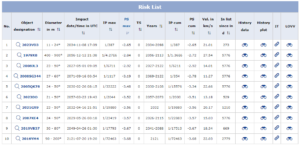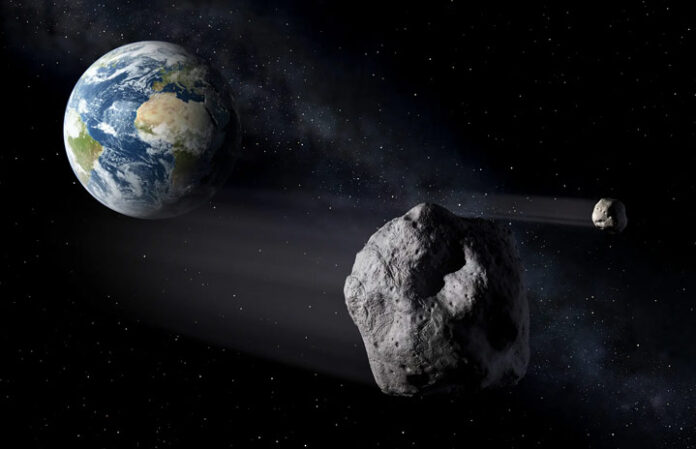Asteroids, also known as planetoids, are significant rocky bodies orbiting in space. Their sizes can range from a mere 10-20 meters to as large as 100-200 kilometers. The largest known asteroid is Ceres, with a diameter of 940 kilometers, while the smallest discovered is just 2 meters wide. Most asteroids reside in the Asteroid Belt between Mars and Jupiter, which contains millions of these rocky objects. Despite textbook illustrations suggesting otherwise, the average distance between any two asteroids in this belt exceeds one million kilometers.
However, occasionally, asteroids can deviate from this belt and approach Earth. Such objects are referred to as Near-Earth Objects (NEOs). NEOs include not only asteroids but also comets, meteors, meteoroids, and meteorites. The distinction between these terms lies in their composition and behavior:
- Asteroids: Made of rocks and metals, found primarily in the asteroid belt.
- Comets: Composed of ice, rocks, and dust, often displaying a tail when close to the Sun, and originating from the Kuiper Belt beyond Neptune.
- Meteoroids: Small fragments of asteroids or comets.
- Meteors: Meteoroids that enter Earth’s atmosphere, creating visible streaks of light (shooting stars).
- Meteorites: Meteors that survive their atmospheric passage and reach the Earth’s surface.
The Impact Threat and Historical Context
The concern about NEOs stems from their potential to cause catastrophic damage upon collision with Earth. This fear is justified by historical events, such as the asteroid impact that led to the extinction of the dinosaurs 66 million years ago.
The Case of Apophis
One of the most talked-about asteroids is Apophis, with a diameter exceeding 1,000 feet. It will pass remarkably close to Earth on April 13, 2029, at a distance of only 30,000 kilometers. This proximity is closer than some geostationary satellites orbiting Earth. Despite initial fears, NASA has confirmed that Apophis poses no collision threat in 2029 or in the next 100 years, as further observations have ruled out any significant risk.
Risk Assessment and Preparedness
Space agencies maintain risk lists of potentially hazardous NEOs. For example, the European Space Agency (ESA) has a detailed list, noting the potential impact dates, probabilities, and sizes of these objects. The most dangerous asteroids currently on this list include:

- 2023VD3: Discovered in 2023, this asteroid is 11-24 meters wide with a 0.25% chance of colliding with Earth on November 8, 2034.
- 1979XB: A large asteroid (400-900 meters) with a 0.00002% chance of impact on December 12, 2056.
- 2008JL3: With a diameter of 23-50 meters and a 0.01% chance of impact on May 1, 2027.
Earth’s Detection Systems
Several advanced projects and systems are in place to detect NEOs:
- LINEAR (Lincoln Near-Earth Asteroid Research): Initiated in 1996 by the US Air Force, NASA, and MIT, it uses telescopes to discover over 10,000 objects annually.
- CSS (Catalina Sky Survey): Operated by the University of Arizona, it uses two large telescopes for precise asteroid detection.
- PAN-STARRS (Panoramic Survey Telescope and Rapid Response System): Located in Hawaii, it uses the world’s largest digital cameras for asteroid detection.
- ATLAS (Asteroid Terrestrial Impact Last Alert System): Also in Hawaii, it provides last-minute warnings by scanning the sky twice nightly.
Defense Strategies
In the unlikely event that an asteroid is on a collision course with Earth, three primary strategies are considered:
- Kinetic Methods: Involves sending a spacecraft to collide with the asteroid, altering its orbit. This method was successfully tested in NASA’s Double Asteroid Redirection Test (DART) in 2022.
- Slow Push and Pull Methods: Gradually change the asteroid’s orbit using solar energy or other gradual thrust mechanisms.
- Nuclear Methods: Deploying nuclear bombs to destroy or deflect the asteroid. This method is controversial due to potential legal and geopolitical issues, as well as the risk of creating multiple dangerous fragments.
NASA’s Preparedness and Future Plans
NASA conducts regular mock exercises to assess and improve planetary defense strategies. The most recent exercise involved over 100 experts from various space agencies and organizations, discussing hypothetical asteroid impact scenarios and potential responses. The results indicate that we are well-prepared to handle such threats, with plans to enhance our detection capabilities further. For instance, NASA plans to launch the Near-Earth Object Surveyor in 2028, a space telescope dedicated to identifying potential hazards.
Conclusion
While the threat of an asteroid impact is genuine, the probability of a significant collision in the next 100 years is exceedingly low. Moreover, continuous advancements in detection and deflection technologies ensure that we are better equipped than ever to prevent such catastrophic events. Therefore, there is no immediate cause for alarm, and efforts to spread misinformation about asteroid threats should be critically evaluated.





